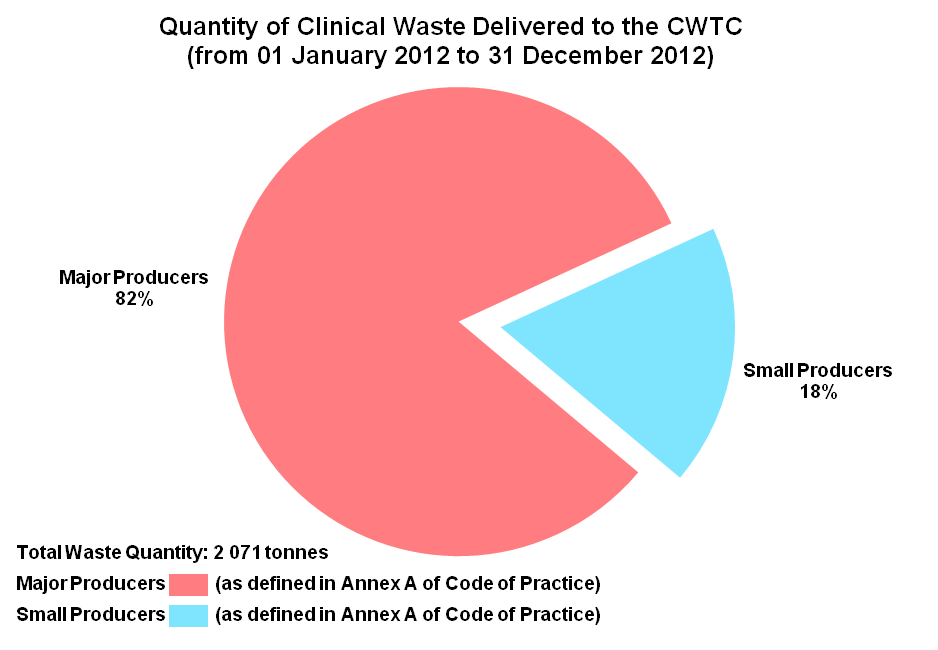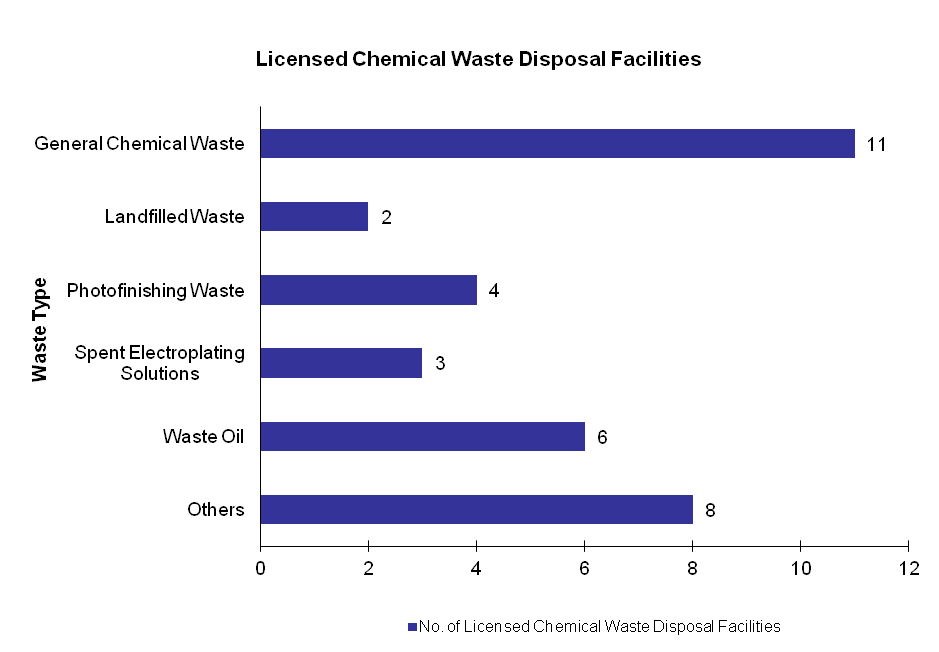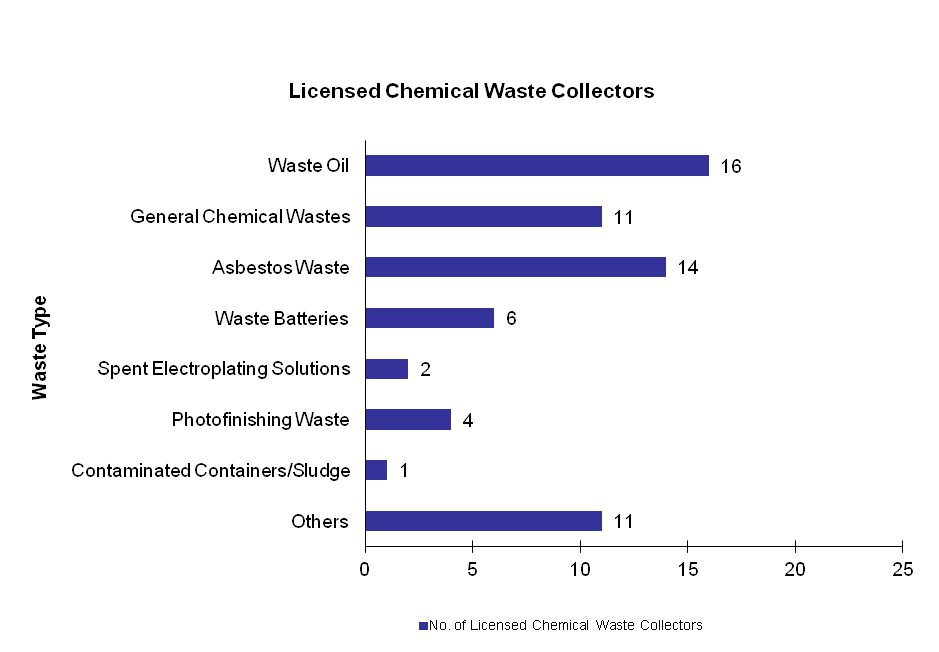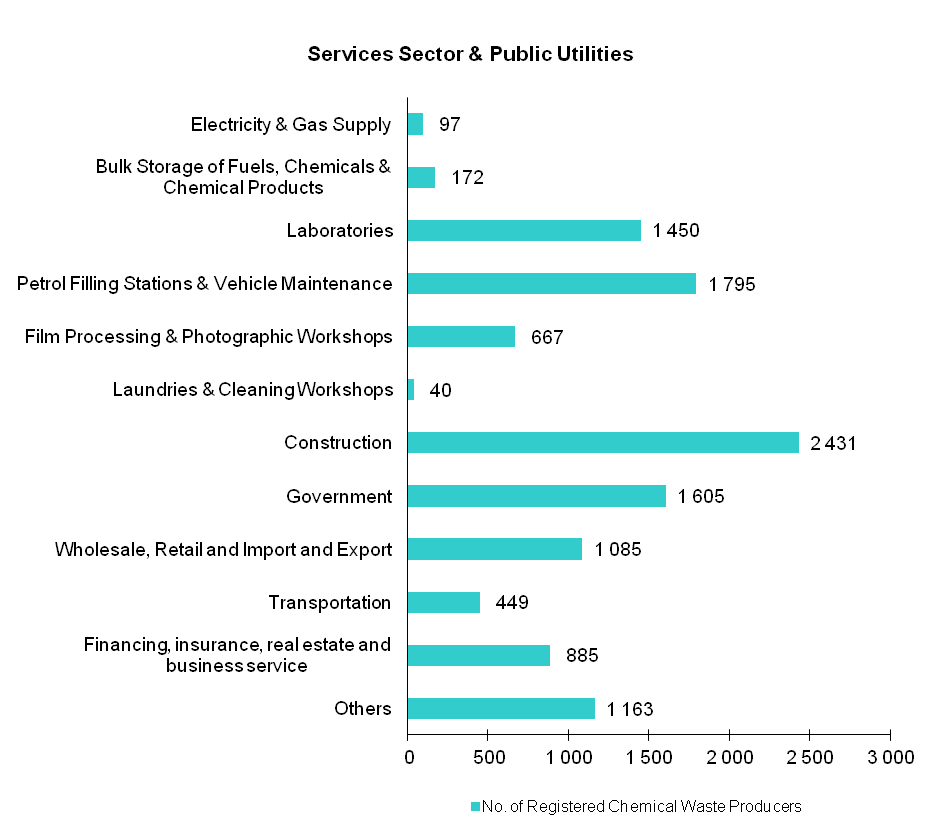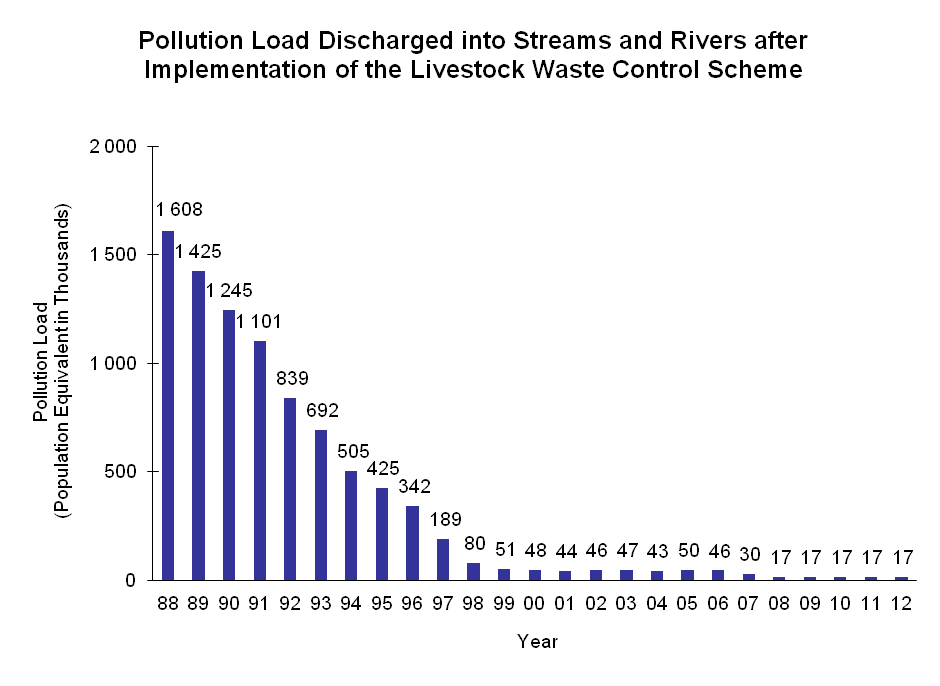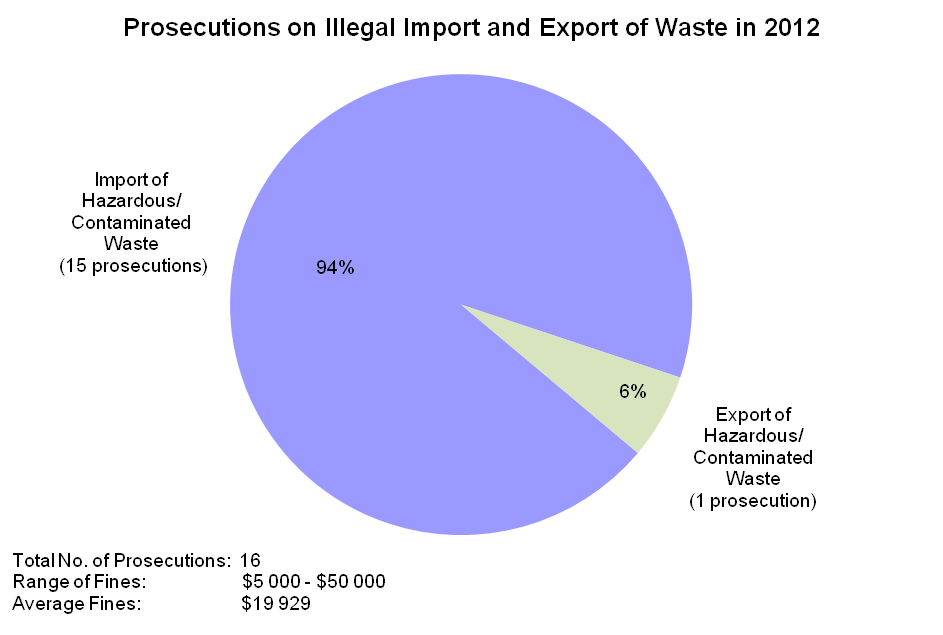Enforcement Activities and Statistics under the Waste Disposal Ordinance 2012
The Waste Disposal Ordinance provides for controls on the management and disposal of waste.
Chemical Waste
Producers of chemical waste have to be registered with the Environmental Protection Department (EPD), while waste collectors and disposal facilities have to be licensed. The movement of waste from its generation to its final disposal point is monitored by a trip ticket system, and 33 950 trip tickets were used in 2012.
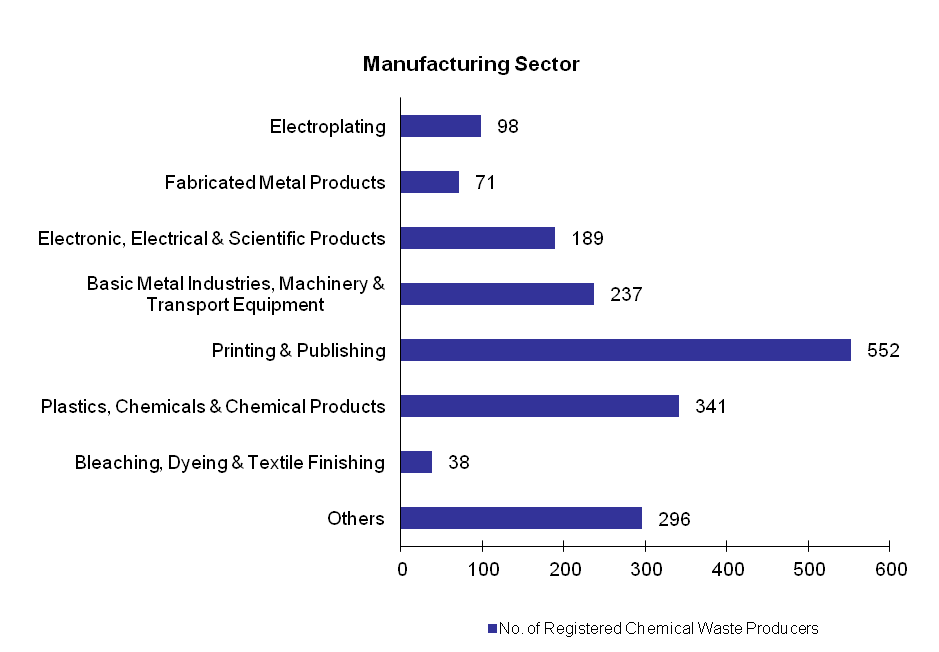
Livestock Waste
Since the launching of two Voluntary Surrender Schemes in 2005 and 2006, the number of livestock farms and the quantity of livestock waste arising have been reduced. In addition, the buyout scheme for live poultry trade had been launched in 2008. This led to further reduction in the quantity of livestock farms and waste produced.
Livestock Waste Prohibition, Restriction and Control Areas
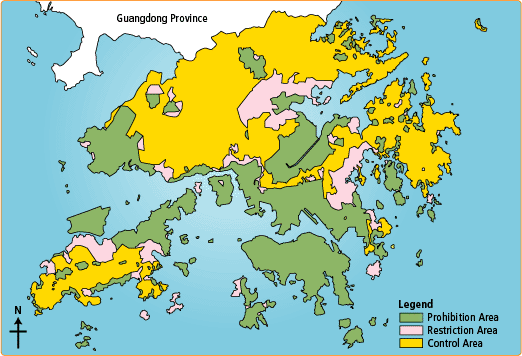
Import and Export of Waste
Import and export of waste has been controlled through permits since 1 September 1996. Any persons who wish to import or export wastes require a permit issued by the EPD unless the wastes are uncontaminated recyclables and are intended for a genuine recycling or re-use purpose.
In collaboration with the Customs and Excise Department and Marine Police, the EPD spot-checks waste consignments at various import and export control points and borders to deter illegal shipments of wastes. Our strategic landfills are also kept under close surveillance against illegal disposal of imported waste.
Waste Import and Export Permit and Transit Consent Statistics in 2012
| No. of Permits Issued : |
8 |
| No. of Shipments Effected under Permits: |
97 (1 934 tonnes) |
| No. of Transit Consents Issued: |
10 |
| No. of Transit Notifications Received : |
16 |
| No. of Shipments Effected under Transit Consents: |
8 (799 tonnes) |
Clinical Waste
The Waste Disposal (Clinical Waste)(General) Regulation became effective on 1st August 2011. All Clinical Waste Producers are required to safely handle clinical waste and arrange for its proper disposal. Each Clinical Waste Producer is assigned a premises code to identify the premises where clinical waste is generated. Up to the end of 2012, 8 267 clinical waste producers have obtained premises code from EPD. Of these, there are around 410 Major Clinical Waste Producers which comprise public and private hospitals, government clinics and medical laboratories managed by government. The remainder includes private medical and dental clinics/practices, private dental, medical, veterinary or pathological laboratories, private Chinese medicine clinics/practices, residential care homes for the elderly, nursing homes, private veterinary clinics/practices, medical research facilities, universities and other relevant organizations.
